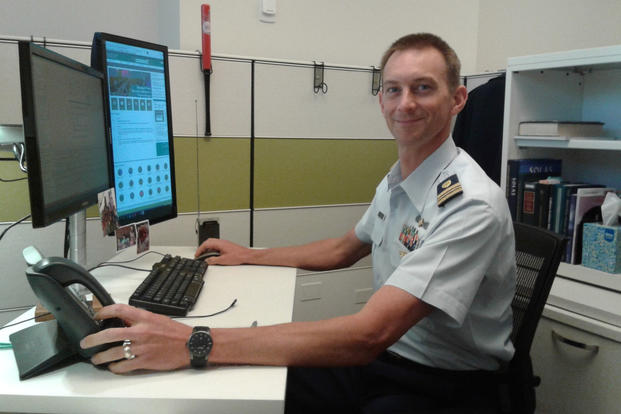WASHINGTON -- A Coast Guard officer who helped coordinate the response to Hurricanes Harvey, Irma and Maria has earned an international emergency management credential.
Coast Guard Lt. Cmdr. Matthew J. Walter received the Certified Emergency Manager credential from the International Association of Emergency Managers in June.
Walter is one of only 2,738 people to have been approved for the credential since it was established 25 years ago. Earning the certification, he said, followed a rigorous process that required training, education, references, experience and an examination.
A native of Mansfield, Ohio, Walter is the program manager for navigation equipment carriage requirements in the Navigation Standards Division at the Coast Guard headquarters here. He previously served in command centers and on the Coast Guard Cutters Valient and Neah Bay. He also commanded the St. Ignace, Michigan, based Coast Guard Cutter Biscayne Bay, a 140-foot-long Bay Class icebreaking tug.
Hurricane Response Effort
For nearly three months during the 2017 hurricane season, Walter worked here and in Miami alongside 45 other government agencies to coordinate the response to the massive storms that caused more than $180 billion of damage and displaced more than 6.5 million residents.
Following Hurricane Harvey, Walter volunteered to serve at the Federal Emergency Management Agency National Response Coordination Center here.
"We shepherded millions of dollars of support money to response agencies that funded emergency and support operations to help those affected by the hurricanes," he said. "Working with emergency managers from so many different levels of government, it became apparent that holding a certification provided credence to the work that the Coast Guard does every day."
Since Walter had previously served in the Sector Houston-Galveston command center, Hurricane Harvey especially hit home.
"I reached out to all my shipmates who were still serving in Houston," Walter said. "I let them know that they had a friend in D.C., that we were praying for them and that we were doing everything we could from the national level to support their efforts.
Working With FEMA
"I had a greater understanding of the Houston operation area, the players who needed to be involved and the solution sets they had planned," he continued. "This understanding enhanced my performance as a FEMA watch-stander."
Walter then deployed to Florida to serve as the Miami branch director, responsible for mitigating the environmental threat posed by hundreds of vessels displaced by Hurricane Irma across a 250-mile stretch of coastline. Protecting sensitive coastal eco-systems in south Florida, the Miami branch carefully removed 107 derelict vessels and recovered 5,259 gallons of hazardous substances.
During his service in other command centers, Walter also directed the response to a wide variety of emergency scenarios, from a sudden storm that caught boaters off-guard along the Gulf Coast to a group of Ohio ice fishermen who got stranded on Lake Erie when their ice slab broke away from the shore.
After 15 years of service in the Coast Guard, Walter said his new emergency manager credential has expanded his professional horizons and demonstrated how the multi-mission maritime service fits into the larger emergency management community.
"Adding a professional certification gives me a greater depth of understanding of the civilian field. Putting myself through this process broadened my aperture, lexicon and professional network," he said.
Walter said getting a professional certification such as an Emergency Manager Certificate or a Vessel Master's License provides Coast Guard personnel with credentials for the life-saving work they do every day.
"The United States Coast Guard is a highly respected emergency management agency," he said. "Obtaining this professional certification just codifies that."















